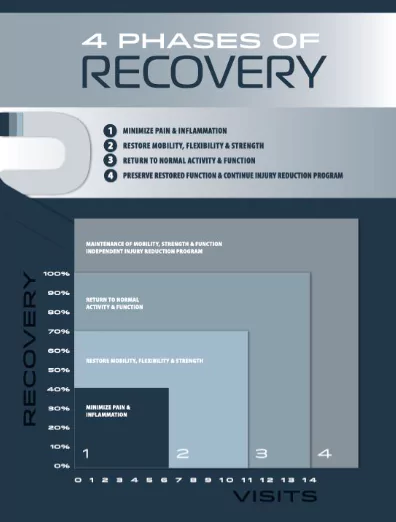There’s no getting around it—fully rehabilitating after orthopedic surgery is a long and challenging process. However, becoming familiar with the phases of post-operative rehabilitation can demystify the process and help you navigate it more effectively.
Post-surgical rehabilitation is a step-by-step process designed to restore function, reduce pain, and improve long-term outcomes. It’s important to know that this process takes time and dedication, but you can achieve a successful recovery with the right approach.
Post-operative rehabilitation involves several phases, each with specific goals and treatments. Today, we want to explore each of those phases in detail. From the immediate post-surgery period to the final phase of functional recovery, knowing what to expect can help you better understand your progress.
If you or a loved one is preparing for surgery, now’s the time to call Rose City Physical Therapy to learn more about how our Portland, OR physical therapists can support your rehabilitation. Keep reading for a detailed overview of the different phases of post-operative rehabilitation!
Phase One of Post-Operative Rehabilitation: Healing
This initial phase begins right after surgery and typically lasts for the first few weeks. Our primary focus is on managing pain, reducing swelling and inflammation, and working to prevent scar tissue formation, which can cause long-term problems.
What Treatments and Techniques Will We Use During the Healing Phase?
During healing, you can expect gentle movements, and therapies to minimize swelling, like ice therapy, interferential current and compression. We’ll guide you through exercises and gentle range-of-motion activities to promote circulation, improve mobility, and minimize scar tissue formation.
We’re also here to help you monitor your surgical site, watch out for complications (like blood clots), and instruct you on how to protect the site as it heals. Depending on your surgery, this may include using slings or mobility aids like crutches.
Phase Two of Post-Operative Rehabilitation: Mobility
The second phase usually spans from the second week to about six weeks after surgery. Here, we emphasize regaining movement and continuing to reduce pain, especially as you’ll probably want to start reducing (or stopping) pain medication during this stage. We’ll also start you on light strengthening exercises.
What Treatments and Techniques Will We Use During the Mobility Phase?
We’ll progress you through range-of-motion exercises and stretches targeting the area around the surgical site. Light strengthening exercises are commonly implement in this phase too. We’ll also incorporate manual therapy techniques, such as soft tissue manipulation or joint mobilization, which can help manage pain and prepare your body for exercise.
Phase Three of Post-Operative Rehabilitation: Strength
The third phase typically lasts for six to twelve wor more eeks after your surgery. Your surgical site has healed by this point, but your body still hasn’t fully rehabilitated. That’s why you’ll need to focus on restoring muscle strength and joint stability. The main goal of the strengthening phase is to help you return to day-to-day activities, like walking or doing chores around the house.
What Treatments and Techniques Will We Use During the Strength Phase?
We’ll work with you to develop more intensive exercise programs that include resistance training, early functional exercises and other vigorous activities. If your surgery impacted your balance or gait in some way (for example, an ACL reconstruction procedure), we’ll also incorporate specialized training to improve your balance, stability, and walking patterns.
We’ll monitor your progress closely and adjust your program as needed, either increasing or decreasing the intensity to ensure you’re challenging yourself without risking injury.
Phase Four of Post-Operative Rehabilitation: Function
The fourth and final phase typically lasts three to six months post-surgery, although it may take a little longer, depending on your procedure. This stage focuses on full rehabilitation, with a total restoration of your strength, mobility, and function.
Ultimately, we want you to return to pre-surgery activity levels if you’re an athlete, including returning to your chosen sport.
What Treatments and Techniques Will We Use During the Function Phase?
This is the phase where we introduce more advanced strengthening exercises, agility drills, and functional or sport-specific training. We’ll also continue improving balance, coordination, and endurance.
The function phase will also typically include a return-to-activity schedule: personalized information about what types of training you can safely perform, movement modifications, and more.
Schedule an Appointment to Learn More
At Rose City Physical Therapy, each of the phases of post-operative rehabilitation is tailored to your individual needs, ensuring you receive the best possible care. If you’ll be undergoing surgery soon, call us today to set up an initial consultation and learn more about what we can do to make your surgery a success!
In the meantime, click here download our eBook ‘Four Phases of Recovery’ for more indepth information on the rehab journey.



